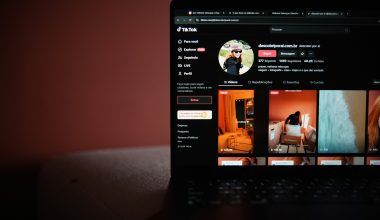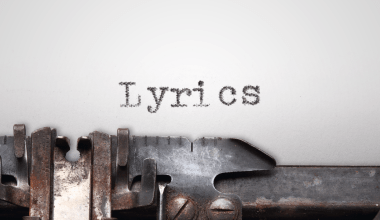Why Making a Song is Magical
Have you ever listened to a song and thought, “I wish I could make something like this”? Well, guess what? You can! Making a new song is a beautiful journey where you express your emotions, tell stories, or just have fun experimenting with music. The best part? Anyone can do it with a little effort and creativity.
This guide will help you learn how to make a new song step by step. Whether you’re a complete beginner or someone with a little experience, you’ll find simple tips here to create music you’ll be proud of.
Step 1: Start with Inspiration
Every song begins with a spark of creativity. But what if you don’t feel inspired? Don’t worry; inspiration is everywhere! Here’s how you can find it:
- Listen to Different Music: Explore genres you’ve never heard before. A jazzy tune or a peppy K-pop song might spark an idea.
- Observe Life Around You: Love, heartbreak, joy, sadness—your experiences can become a great song.
- Watch Movies or Read Books: A single scene or a beautiful line might trigger a melody or lyric in your mind.
Pro Tip: Carry a notebook or use your phone to jot down ideas whenever they strike. Even a random word or sound could lead to something amazing!
Step 2: Understand Song Structure
Think of a song as a puzzle. Each piece plays a role in making the picture complete. Here’s a simple breakdown of how most songs are structured:
- Intro: This is like the opening scene of a movie. It sets the mood and grabs attention.
- Verse: This is where you tell your story or build the emotion.
- Chorus: The catchy, repeated part that sticks in people’s heads.
- Bridge: Adds a twist or a fresh perspective before returning to the chorus.
- Outro: A soft landing or a big finish to end the song.
You don’t have to follow this exact structure every time. Be creative and find what suits your style.
Step 3: Writing Lyrics
Now comes the heart of the song—your lyrics. Lyrics are like poetry but with a rhythm. Here’s how to make them shine:
- Pick a Theme: Decide what your song will be about. Love? Hope? A fun party? Keep it simple.
- Be Honest: People connect with real emotions. Write from the heart.
- Keep It Simple: You don’t need fancy words. Simple, relatable lines work best.
- Use Rhymes or Free Verse: Rhyming makes lyrics memorable, but it’s not a must. Do what feels right.
For example:
- If your song is about love, write lines like:
“Your smile is a sunrise, lighting up my sky.”
Step 4: Crafting a Melody
The melody is the tune people hum even when they don’t remember the lyrics. Here’s how to create one:
- Start Simple: Hum a tune or whistle. It doesn’t need to be perfect.
- Play with an Instrument: If you know the basics of guitar or piano, experiment with chords.
- Try Different Tempos: A slower melody might suit an emotional song, while a faster one works for happy vibes.
Pro Tip: Record your ideas on your phone. Sometimes, the first melody you hum is the best!
Step 5: Adding Chord Progressions 🎸
Chords are the backbone of your melody. They make the tune feel fuller and more emotional. If you’re new to chords, don’t stress! Start with these beginner-friendly progressions:
- C-G-Am-F: A classic combination for pop songs.
- Em-C-G-D: Great for emotional or uplifting songs.
You can find online tools or apps to help you learn chords quickly. Experiment and see what sounds best with your melody.
Step 6: Recording Your Song
Recording your song is super exciting because it brings your creation to life. Here’s how to get started:
- Find a Quiet Place: Choose a room where there’s no background noise.
- Get Basic Equipment: A simple microphone, headphones, and free software like Audacity or GarageBand are enough to begin.
- Practice Before Recording: Sing your song a few times to feel confident.
Don’t worry if your first recording isn’t perfect. You can always edit it later!
Step 7: Editing and Mixing
Editing makes your song sound polished. Here’s how to do it:
- Trim the Rough Edges: Remove pauses, mistakes, or background noise.
- Balance Levels: Make sure the vocals and instruments are equally clear.
- Add Effects: Use reverb or echo for a professional touch.
If you’re unsure, there are plenty of free tutorials online to help you learn basic mixing.
Step 8: Mastering Your Track
Mastering is like the icing on the cake—it makes your song sound amazing on any device. Here’s what you can do:
- Equalize Frequencies: Balance the bass, mids, and treble.
- Boost Volume: Ensure your song isn’t too soft or too loud.
- Use AI Tools: Platforms like Deliver My Tune offer AI mastering, which is perfect for beginners.
Step 9: Sharing Your Song with the World
Congratulations, your song is ready! Now it’s time to share it. Here’s how:
- Upload to Music Platforms: Use platforms like Spotify, Apple Music, or YouTube.
- Promote on Social Media: Post snippets of your song on Instagram or TikTok to create buzz.
- Collaborate with Others: Ask friends to share your song or feature in their playlists.
If this feels overwhelming, music distribution services like Deliver My Tune make it easy to get your song on multiple platforms.
Tips to Keep the Creative Spark Alive
Making a new song isn’t always smooth sailing. Here’s how to stay motivated:
- Don’t Aim for Perfection: It’s okay if your first song isn’t perfect. Every artist grows with practice.
- Take Breaks: Step away if you’re stuck. A fresh mind works wonders.
- Experiment: Try new instruments, styles, or genres. You might surprise yourself!
Why Making Music is Worth It
Music is more than just sound. It’s a way to share your emotions, connect with others, and leave a mark. Whether your song becomes a global hit or just something you play for friends, the joy of creating it is priceless.
So, grab your pen, hum a tune, and start your journey. Learning how to make a new song is easier than you think—and the world is waiting to hear your voice.
Related Articles:
For further reading, explore these related articles:
- How to Follow Spotify Playlist and Enjoy Endless Music Effortlessly
- How to Upload Audio on Instagram: An Easy Guide for Everyone
- A Simple Guide on How to Upload Your Songs to Spotify
For additional resources on music marketing and distribution, visit Deliver My Tune.






